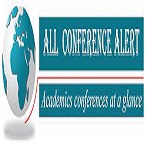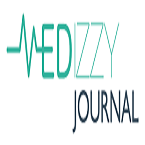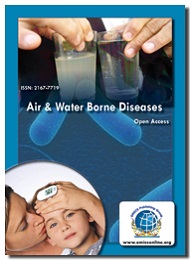Theme: Advancing in science and improving care to prevent the Infectious Diseases
Euro Infectious Diseases 2023
On behalf of the Board of Organizing Committee, we heartily invite you to attend the 15th Euro-Global Conference on Infectious Diseases during October 09-10, 2023 in Zurich, Switzerland focousing on the “Advancing in science and improving care to prevent the Infectious Diseases”.
Brochure: Click Here
Why attend:
Euro Infectious Diseases 2023 will provide an international platform for discussion and representing their views on present and future challenges in various infectious diseases like Coronaviruses, Hepatitis, HIV/AIDS, Tuberculosis, Bacterial infectious diseases like cholera, Diphtheria, Bacterial meningitis, gonorrhea, Fungal Infections like Athlete’s foot, Jock itch, Ringworm, Yeast infection and Parasitic infections like E.vermicularis, Trypanosoma cruzi, Cysticercosis, Toxocariasis. It gives opportunities to the young to represent their thoughts and ideas of new techniques regarding the Control of infectious diseases.
Target audience:
- Microbiologists
- Bacteriologists
- Virologists
- Parasitologists
- Mycologists
- Pathologists
- Pharmacists
- Epidemiologists
- Dermatologists
- Neurologist
- Ophthalmologist
- Cardiologist
- Health Care Professionals
- Researchers
- Scientists
- Nurse
- Students
- Mycologists
- Pharmacists
- pidemiologists
- Researchers
- Students
Participation Benefits:
- Speaker will be felicitated with a Certificate.
- Speaker details will be displayed on the conference website.
- Accepted Abstracts will be published in respective supporting journals, each abstract will be labelled with a DOI provided by Cross Ref.
- We will include your University logo on the conference banners, books, and on the conference website.
- Chance to Chair a session of your interest
- You can moderate the conference.
- Speaker and Abstract pages created in Google on your name would get worldwide acknowledgment to your research profile and many more.
Track 1: Infectious Disease
An infection happens once a being enters a person’s body and causes hurt. It is also referred to as transmissible disease or communicable disease, which is an illness resulting from an infection. These infectious microscopic organisms are referred to as pathogens, and they will multiply quickly.
Track 2: Bacterial Diseases
Bacteria are acellular microorganisms, referred to as prokaryotes. Microorganisms take 3 main shapes: Spherical, Rod, and Spiral. Bacteria can live in almost any type of environment, from extreme heat to intense cold, and few will even survive in radioactive waste. Some “good” bacteria attack “bad” bacteria and prevent them from causing illness. However, some bacterial diseases are often deadly.
Track 3: Viral Infections
Viral infections occur due to infection with a germ. Viruses contain a bit of genetic code, and a coat of protein and lipid (fat) molecules guards them. Viruses invade a host and assign themselves to a cell. As they enter the cell, they discharge their genetic material. This material forces the cell to duplicate the virus, and the virus grows.
Track 4: Fungal Infections
A fungus is often a multicellular parasite that can molder and engross organic matter using an enzyme. Many fungal infections grow in the upper layers of the skin, and some growth in the deeper layers. Inhaled yeast or mold spores can occasionally lead to fungal infections, such as pneumonia, or infections all over the body.
Track 5: Parasitic Infections
A parasite is an organism that exists inside or on a host. Around 70% are not noticeable to the human eye, such as the malarial parasite, but certain worm parasites can reach over 30 meters in length. Parasites are not an illness, but they can feast on diseases. Different parasites have dissimilar effects.
Track 6: Dermatological Infections
Your skin is the main organ of your body. Its purpose is to protect your body from infection. Sometimes the skin itself becomes infected. Mild infections may be curable with over-the-counter medications and home remedies, whereas other infections may require medical care.
Track 7: Neurological Infections
Viruses and microorganisms sometimes invade the body, contaminating various organs and causing everything from mild disturbances to severe difficulties. Bacterial organisms are frequently to blame, but animal parasites and fungi can also origin infection. Neurological infections happen when these viruses and organisms invade the nervous system.
Track 8: Ophthalmological Infections
Eye infections occur when some harmful organism invades a part of your eye. The cause of the infection is often bacterial or viral, but it may be due to some other reason. There can be many types of eye infections that can contain conjunctivitis, keratitis, acanthamoeba keratitis, etc. When it comes to dealing with potential eye infections, prevention is the finest therapy.
Track 9: Respiratory tract infections
Respiratory tract infections (RTIs) are infectious diseases relating to the respiratory tract. An infection of this type typically is further classified as an upper respiratory tract infection or a lower respiratory tract infection. Lower metabolism infections, like respiratory illness, tend to be way more severe than higher metabolism infections, like a respiratory disease.
Track 10: Urinary Tract Infection
A urinary tract infection is an infection in any portion of your urinary system, which contains your kidneys, bladder, ureters, and urethra. If you are a woman, your chance of receiving a UTI is high. Some specialists rank your lifetime risk of getting one as high as 1 in 2, with many women having repeat infections, sometimes for ages. About 1 in 10 men will grow a UTI in their lifetime.
Track 11: Paediatric Infectious Diseases
Paediatric infectious diseases are those that happen in children from birth to 10 years. 2/3rd of the deaths of children in the past 10 years were produced by infectious diseases. New-borns are at advanced risk as their immune system is immature and cannot battle infections.
Track 12: Antibiotics and Anti-viral
Antibiotics are gathered into "families" of similar kinds. Antibiotics are usually set aside for bacterial infections because these types of medicines have no effect on diseases caused by viruses. But sometimes it is hard to tell which type of germ is at work. Antiviral drugs are the drugs which are used to treat the viral infections.
Track 13: Vaccines
The vaccine is a biological preparation that cares immune system to fight particular diseases. It competes for an important role in saving lives and greatly ever-changing the burden of the many infectious diseases. Consciousness and efficiency of Vaccination have made many sicknesses occasional over years.
Track 14: Preventive Measures
Preventive measures suggest any affordable measures taken by anyone in response to an occasion, to prevent, minimize, or mitigate loss or injury, or to impact environmental clean-up.
Track 15: Public Health
Public health is the discipline which deals with the science and art of preventing infections by improving the health of population.
Track 16: Infection Prevention and Control
Infection prevention and control (IPC) is a systematic approach and practical solution considered to avoid harm caused by infection to patients and health personnel. IPC lives in a unique position in the field of patient safety and quality. The necessity for having IPC programs nationally and at the ability level is clearly strengthened within the WHO 100 Core Health Indicators list.
Infectious Diseases conferences | Euro Infectious Diseases conferences | Euro Infectious Diseases 2023 | Infectious Diseases conferencess | Euro Infectious Diseases conferences Zurich | Euro Infectious Diseases Conferences 2023 USA | Infectious Diseases Conferences 2023 Asia
USA: Infectious Disease Society of America, HIV Medicine Association, International Society for Infectious Diseases.
Europe: European Society for Clinical Microbiology and Infectious Diseases, British Society for Antimicrobial Chemotherapy, Society for General Microbiology, British Association for Sexual Health and HIV, British HIV Association, The Hospital Infection Society, Infection Prevention Society, British Society for Medical Mycology, The Royal Society of Tropical Medicine and Hygiene, Royal Society for Public Health.
Asia Pacific: Human Genetics Society of Australasia, Genetics Society of Japan, NDC Medicine
Worldwide prevalence of infectious diseases and onset of COVID-19
The prevalence of catching diseases in developed and developing regions can absolutely influence the expansion of the communicable disease medicine market. The identification and management of such diseases area unit accountable for the increasing variety of medicines for communicable disease diagnostic examinations these factors, aboard the growing trend for medicine, area unit expected to drive the request for communicable disease medicine throughout the prediction amount. The broad-scale population-based testing is needed to recover bar and management efforts for COVID-19. These tests area unit performed by communicable disease diagnostics; thus, it's expected to possess associate degree optimistic impact on this market.
Growing opportunities in growing markets
Developing economies like Asian country, Republic of Korea, Brazil, and North American country area unit expected to supply potential growth possibilities for major players operational within the communicable disease medicine market. This may be attributed to the high unwellness prevalence, massive patient population, up health care organization, increasing non-refundable financial gain, and increasing medical business enterprise in these states.
“In 2020, reagents, kits, and consumables phase accounted for the most important share of the communicable disease medicine market, by product & service”.
Based on product & service, the communicable disease medicine market is divided into reagents, kits, and consumables; utensils; and software package & services. In 2020, the reagents, kits, and consumables phase accounted for the main share of this market. The frequent purchase of that merchandise because of their perennial usage drives the market growth of this section. “In 2020, immunodiagnostics phase accounted for the most important share within the market, by expertise”. “North America is that the major regional marketplace for the communicable disease diagnostics”.
The worldwide communicable disease medicine market is divided into North America, Europe, Asia Pacific, geographical region, and therefore the geographic region & Africa. In 2020, North America accounted for the largest share of the universal communicable disease medicine market. The North yankee communicable disease medicine market's growth are often attributed to the extraordinarily developed health care system within the U.S. and North American country, the presence of the many leading national scientific laboratories, and therefore the simple accessibility to technologically progressive instruments.
Conference Highlights
- Infectious Disease
- Bacterial Infections
- Viral Infections
- Fungal Infections
- Parasitic Infections
- Dermatological Infections
- Neurological Infections
- Ophthalmological Infections
- Respiratory tract infections
- Urinary Tract Infection
- Tropical Disease
- Paediatric Infectious Diseases
- Antibiotics and Anti-viral
- Vaccines
- Preventive Measures
- Public Health
- Infection Prevention and Control
- Pharmacology and Therapeutics
- Molecular Diagnosis of Infectious Diseases
To share your views and research, please click here to register for the Conference.
To Collaborate Scientific Professionals around the World
| Conference Date | October 09-10, 2023 | ||
| Sponsors & Exhibitors |
|
||
| Speaker Opportunity Closed | Day 1 | ||
| Poster Opportunity Closed | Click Here to View | ||
Useful Links
Special Issues
All accepted abstracts will be published in respective Our International Journals.
- Journal of Infectious Diseases & Therapy
- Journal of Air and Water Borne Diseases
- Journal of Bacteriology and Parasitology
Abstracts will be provided with Digital Object Identifier by




































